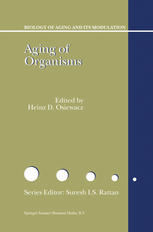

Most ebook files are in PDF format, so you can easily read them using various software such as Foxit Reader or directly on the Google Chrome browser.
Some ebook files are released by publishers in other formats such as .awz, .mobi, .epub, .fb2, etc. You may need to install specific software to read these formats on mobile/PC, such as Calibre.
Please read the tutorial at this link: https://ebookbell.com/faq
We offer FREE conversion to the popular formats you request; however, this may take some time. Therefore, right after payment, please email us, and we will try to provide the service as quickly as possible.
For some exceptional file formats or broken links (if any), please refrain from opening any disputes. Instead, email us first, and we will try to assist within a maximum of 6 hours.
EbookBell Team

4.7
66 reviewsBiological aging as the time-depending general decline of biological systems associated with a progressively increasing mortality risk is a general phenomenom of great significance. The underlying processes are very complex and depending on genetic and environment factors. These factors encode or affect a network of interconnected cellular pathways. In no system this network has been deciphered in greater detail. However, the strategy of studying various biological systems has let to the identification of pathways and specific modules and makes it obvious that aging is the result of different overlapping mechanisms and pathways. Some of these appear to be conserved ("public") among species, others are specific or "private" and only of significance in one or a few organisms. This volume in the series on "Biology of aging and its modulation" specifically focuses on organismic aging. The book covers research on organisms from lower to higher complexity representing examples from very diverse taxa like photosynthetic plants, fungi, sponges, nematodes, flies, birds and mammals. Such a broad treatise of this complex topic provides a comprehensive "flavor" about the current issues dealt with in this rapidly growing scientific discipline.